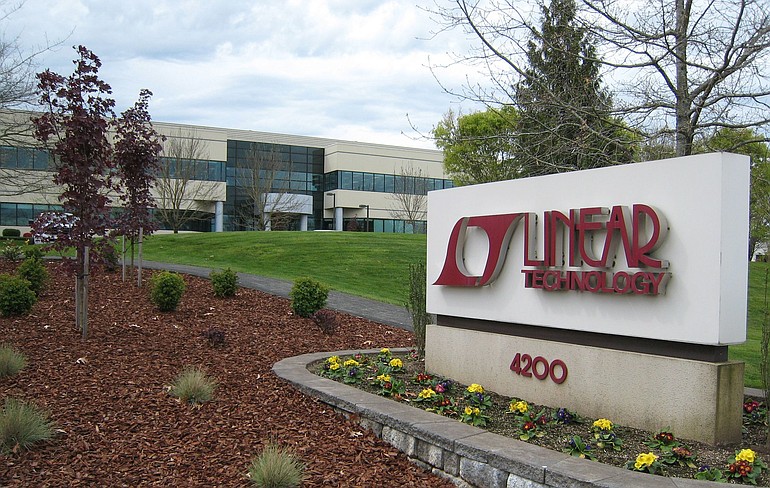When most companies in the semiconductor industry laid off workers and closed facilities, Linear Technology did something controversial among company insiders. Even as its quarterly sales plummeted by 24 percent from $310 million in September 2008 to $236 million one year later, the Milpitas, Calif.-based chipmaker decided to keep nearly all of its employees and instead cut their hours.
“We debated whether we were being reckless,” said Lothar Maier, chief executive officer of Linear Technology, which operates a factory in Camas. “We obviously have obligations to the shareholders.”
That risky move paid off almost two years later when Linear was ready to ramp up quickly with surging demand while competitors struggled to restaff. As a result, Linear’s sales grew 14 percent in the fourth quarter of 2009 compared with the previous quarter and then again by another 21 percent in the first quarter of 2010.
That growth could eventually translate into an expansion of the company’s Camas plant, Maier said in April. Linear is considering adding a second, identical wafer fabrication plant to its campus at 4200 N.W. Pacific Rim Blvd., doubling the production capacity at the site and adding as many as 300 new high-tech jobs to Clark County.
That decision hinges on its continued growth, Maier said, and ultimately on its overall position in the semiconductor market. The Columbian sat down with Maier to talk about the technology that underlies the company’s growth.
You have a little bit of a niche in the semiconductor industry. Can you explain what makes Linear different?
We’re not a digital company. We don’t make memories or microprocessors. We make analog products that convert real world things into electronics — things like sound, light intensity and vibration. In the digital space, the value that the products deliver are small-format running on leading-edge technologies, and there isn’t a lot of differentiation between one digital product and another. In the analog space, everything is unique and personalized. We make 7,000 or 8,000 different products, and there’s very little commonality between what we make and what our competitors do.
What’s your biggest market?
The industrial market right now is going through a real significant growth spurt. It’s going through a retooling cycle where it wants everything smaller, more energy efficient, portable and run by batteries, so there’s a lot of push for energy efficiency and portability. That’s something we do well.
Is that what’s driving your growth right now?
(In the) last quarter, all of our end markets grew. Even though (the) industrial (market) is the biggest part of our business, it’s still only 35 percent of our overall business. Communications is our next big market, (such as) cellular base stations and networking equipment. Computers (mostly servers and tablet PCs) are the next biggest part of our market; it was 17 percent last quarter, up from 14 percent the previous quarter.
What are you involved in that consumers might find surprising?
Automotive was 11 percent of our business last quarter. There’s a phenomenal amount of electronics going into cars right now. It started with things (such as) navigation systems, and built-in phones and Bluetooth. That’s just the tip of the iceberg; there’s automated breaking systems, night vision, collision avoidance systems. Most people don’t see it yet because the things we’re working on with car manufacturers now won’t show up until the 2012 or 2013 model years, but a lot of things that were done mechanically will be done electrically because it’s more energy efficient and it’s lighter weight. People don’t realize how much electronics are coming. We’ve (also) introduced a product that carefully manages the charging and discharging of these lithium ion batteries in electric vehicles.
I hear you’re developing a chip that captures energy from vibration.
Our design engineers are more artists than engineers. They’re challenged to create very innovative things that just don’t exist in the marketplace right now. These energy harvesting products are one of them. These products can harvest energy from the environment, and they can do that almost forever. They’ll harvest minute amounts of energy from the vibration of a bridge (for example) and measure the strain on a particular element, then broadcast that information.
How is that innovative?
We make a chip that’s able to operate on that minute amount of electricity, and that’s the big technical challenge: running a semiconductor off just nano-amps of electricity.



